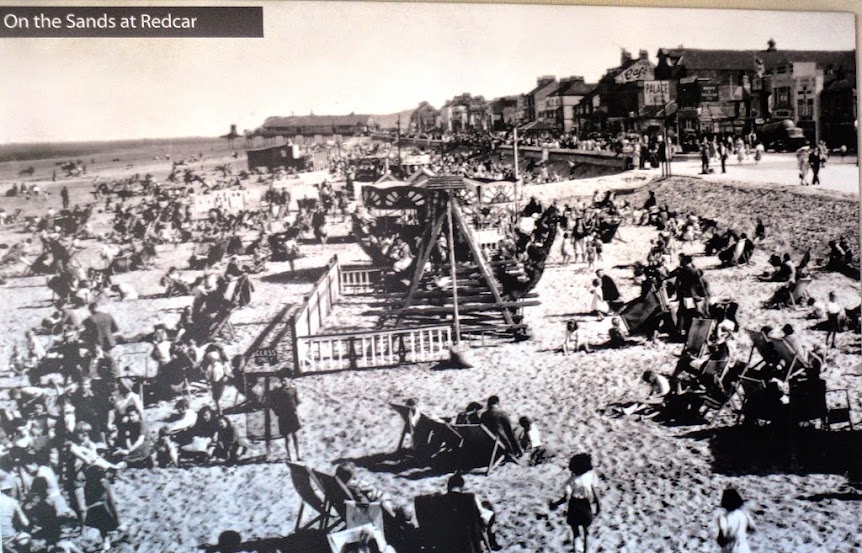I cannot hope to match hair like this but I did once write about my experience with haircuts - see what follows, with a few pictures thrown in.
Hair Today, Gone Tomorrow
It’s a sight I don’t often see these days. But then I don’t visit the
barbers any more. What sight do I mean?
You must have seen a young child, watched over by a hovering mother getting
his or her first hair cut. I must have been about four when I was introduced to
Mr Fawkes, known to everyone as Guy. He was an ex-service man invalided out
during the early days of WWII and fortunate to be retrained as a barber.
I remember being forced to sit on a narrow plank of wood, rough enough
to leave a splinter in your bum if you did not sit still. Not that you had much
chance of moving in the vice like grip of Mr Fawkes. Children were never
allowed to call him Guy.
When I was older and permitted to visit his shop alone I soon realized
why everyone called him Guy. If he had been the real Guy Fawkes, whom we had
learnt about at school, I don’t think he would have been caught before he had
had the chance to ignite the gunpowder in the cellars of the Houses of
Parliament. Guy was an awesome sight with a lighted taper in his hand as he approached, intent on singeing the hairs on the back of the neck and in the ears of the
victim in the chair.
 |
| Frank Churchill having his hair cut |
{Illustration by Chris Hammond in Jane Austen's "Emma."}
It was no fun waiting your turn. If an adult entered you went to the
back of the queue. However it was informative to wait and see which staid
gentleman accepted Guy’s offer of ‘something for the weekend,’ especially when
it was the vicar.
Guy’s shop has gone together with his red and white pole.
 |
| George Webb's shop at 30 Friar Street Reading complete with barber's pole (1890-1899 phot by Walton Adam) |
Guy went as
well some time while I was at university.
 |
| Bob at St Andrews |
There is no barber’s in the village
now. Even if there was it would be a unisex hairdressing salon with nubile
young girls to cut your hair. Now this is something I miss as you will see as
this tale unfolds.
The men on my side of the family have all gone grey and lost their hair.
In my case the first signs of grey were pointed out to me when I was just
sixteen. The receding hairline just crept up on me over the years.
However I
still had sufficient hair to feel shocked when I was subjected to the brutal
trim administered by an army barber on my second day at Catterick as a National
Service man.
 |
| British and American soldiers having hair cut in Normandy in 1994 (ex Imperial War Museum collections) |
My National Service haircut was just like the one behind the soldier with the paper.
Later I thought about auditioning for Hair. Eventually I decided against
it. There really was not much point as I can’t sing and with three left feet my
dancing is more one-sided that England ’s
football team. The audience would have left in horror at the scene in the nude.
After all, who wants to see a hairy ape on stage?
Children have a habit of asking awkward questions. However there are
some who come to their own conclusions. Once when I was not wearing a shirt I
was told, “Daddy, I know why you have no hair on your head. It must have lost
its way and grown on your chest instead.”
Hair has its own way of telling you when you should get it cut. In the
days when I had to wear a safety helmet at work I knew the time had come when
my hair curled upwards outside the brim, preventing my ear defenders from being
deployed.
 |
| Hard hat, safety specs and long sideburns |
While I was in Norway ,
the one thing that delayed corrective action was the thought that a haircut
would cost you an arm and leg as well.
Hair’s a funny thing; it grows profusely where you rather wish it
didn’t, like down you nose and in your ears. Far be it from me to conclude that
here it is well fertilised. Isn’t it strange that the ladies, and men too I’m told,
get their unwanted hairs removed by using wax?
I don’t go to the barber’s any more. I really miss the attention of
those young nubile things. I’m told they are not good for my blood pressure,
but that’s not the reason I have given up. The cost of a haircut soared so much
that it was better to invest in an electric trimmer.
This has it dangers as she who wields the clippers has designs on
trimming the hair on my back – because it gets up her nose in bed. I suppose I
must be thankful that my ears are intact. She draws the line however at using
the attachment to attack those nasal hairs and those with their roots embedded
in wax.
 Finally here’s a safety warning. If you approach me
from behind you had better wear dark glasses. My polished pate shines brighter
than a landing light on a flies’ aerodrome.
Finally here’s a safety warning. If you approach me
from behind you had better wear dark glasses. My polished pate shines brighter
than a landing light on a flies’ aerodrome.For more follicle challenges you need to check the hair styles at Sepia-saturday-230.













































